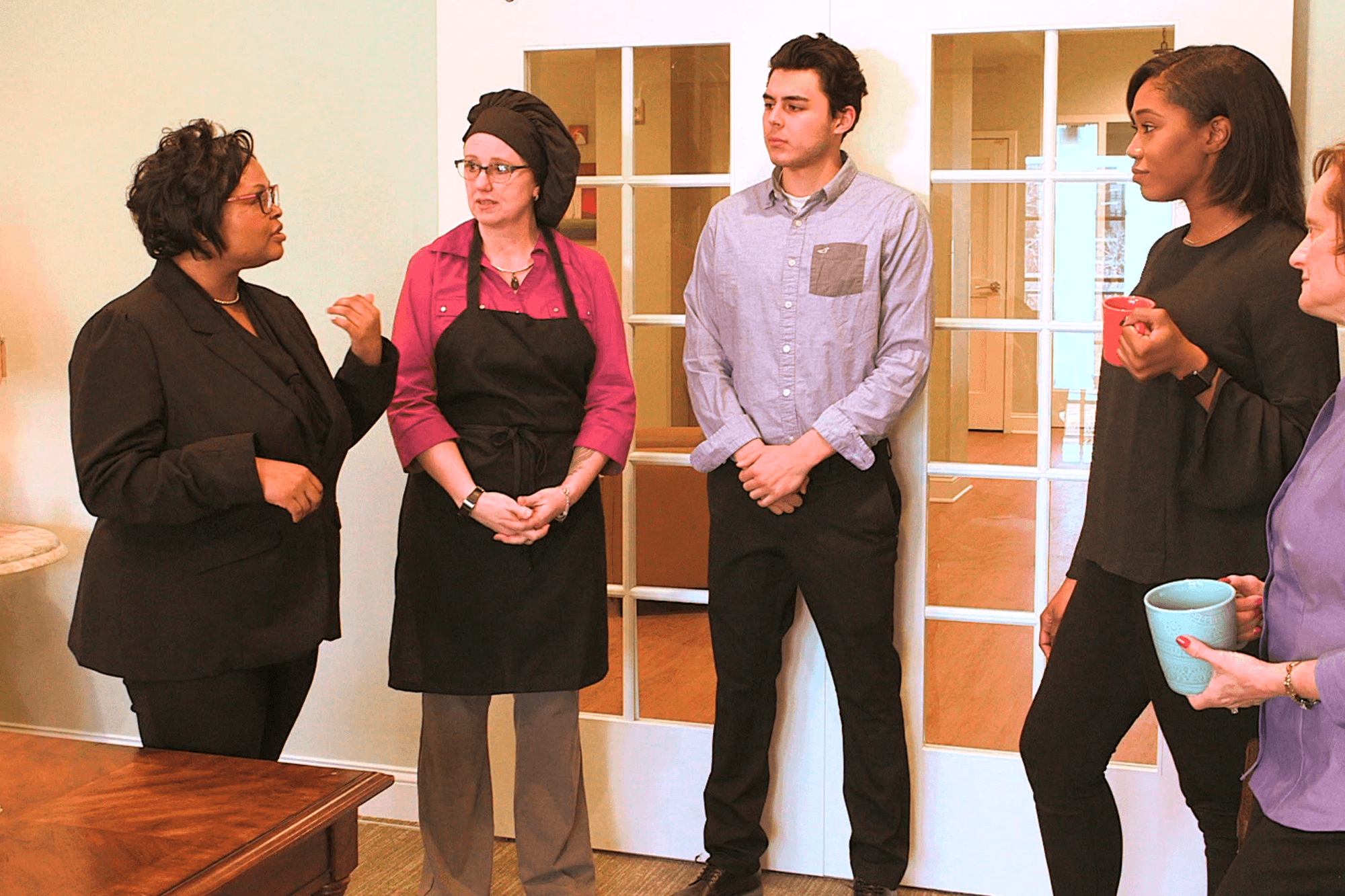
Fundamentals of Household Leadership
No one wants to live in a nursing home. Moving to a nursing home is viewed by most elders and much of society as going to a place to die, a place that requires residents to relinquish their control over their daily lives, a place that reduces its ‘homeless’ inhabitants to bingo, wheelchairs and food served on trays. Not enough people want to work in a nursing home either – employee turnover often hovers around 100% annually; shortage of nurses and CNAs often result in understaffed shifts, staff working double shifts and agency staff – often total strangers to the residents – providing personal
care.
The Household Model as a way of designing the physical environment and the organizational structure, fosters a deep transformation where residents live a good life and staff are happy and involved. A resident living in a household in a licensed skilled nursing facility once told me: “I had a choice when I came here. I could come here or could go to a nursing home. Thank God I chose
here.” And that’s the way it is. Households may still be licensed as skilled nursing, but they are not defined by the words ‘nursing home’. Instead they create an atmosphere of a good daily life, filled
with choice and accessibility. Of both privacy and community – and the ability to move between the two as desired. Of independence and interdependence. Of both house and home.
This workshop details the life that is within our power to create. A life of both house and home. A life that fosters daily life as we all know it. Getting up and going to bed when desired. Bathing how and when one prefers. Being with friends, and being alone at one’s desire. Engaging in daily life – whether cleaning, cooking, reading, playing, befriending – as one chooses. Being able to eat when and what one chooses. Life can be good in a household. This workshop focuses the participants on the role that they can play to create this environment and on the skills that they need to lead, coach, guide and problem-solve. (This course is less in-depth and shorter than our Household Leader Intensive.)
Agenda
Download here
Learning Objectives
Upon completion, participants will be able to:
List the Elements of households and discuss how to develop and strengthen each element in the household
Broadly understand their Performance Management responsibilities
Identify the leadership and team skills that they need as individuals and put a self-growth plan in place for growing this skill set
List the hard and soft skills of versatile work in the households, and identify how their organization is tackling this work
Experience and practice communication, team and community skills including learning circle, team leadership model, conflict management, coaching, expressing clearly, facilitating relationships
Indicate the key competencies necessary in the household and how to foster them
Describe why dining and kitchen life is central to life in the household and how they might encourage its development;
Realize the potential of daily life in the household through an exploration of life enhancement skills
Define a self-led team, evaluate themselves in relation to growing team, and formulate an action plan for on-going development of a self-led team approach
Continuing Education
This educational offering has been reviewed by the National Continuing Education Review Service (NCERS) of the National Association of Boards of Examiners of Long Term Care Administrators (NAB) and approved for 14 clock hours and 14 participant hours.
Tuition
$1100
Register Today
If no sessions listed below, none are currently scheduled. If your organization would like to purchase, contact us.
